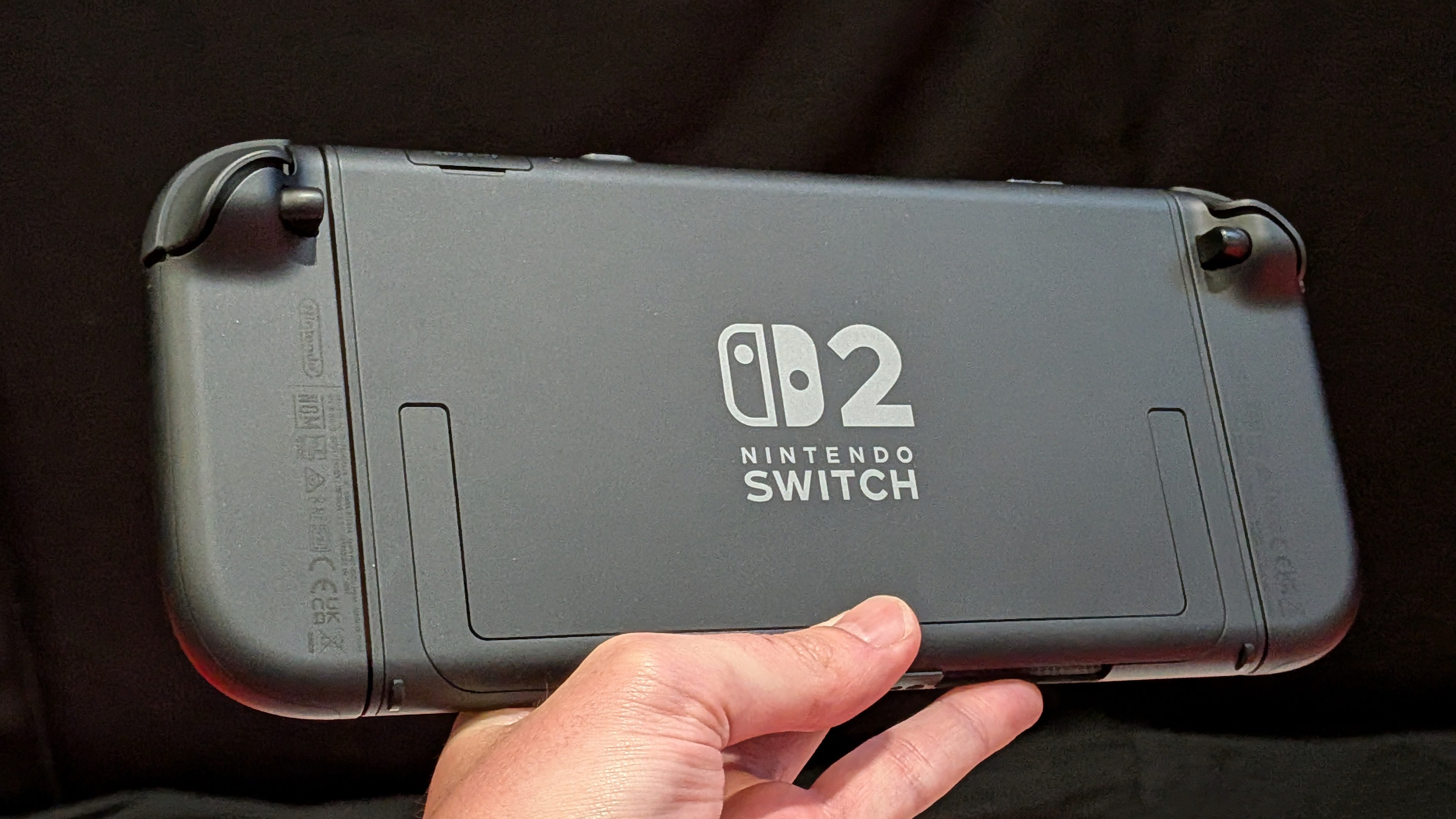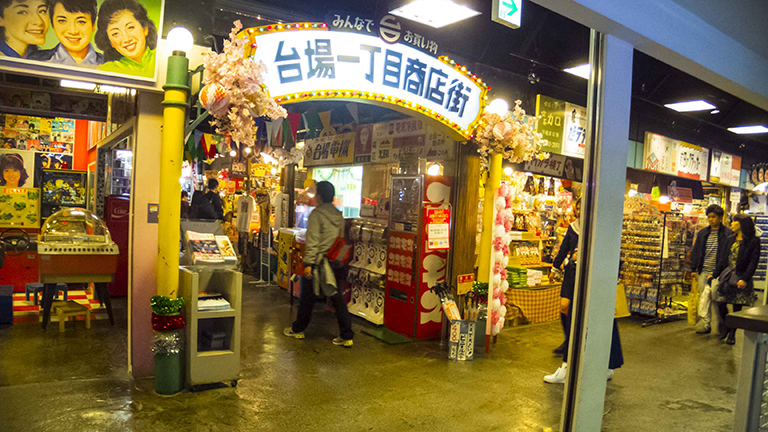
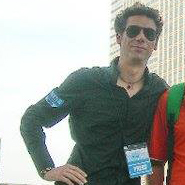
Last week, in a exclusive interview with the Sega Amusement International President Mr. Paul Williams, we spoke about the dramatic return of Daytona USA, one of the most beautiful and requested coin-ops ever made in arcade history.
Today, however, we go back to where we were supposed to be - in Japan!
After many requests today we talk about another rare and difficult place to reach in Tokyo and also show you also how to get there: today we talk about none other than the retro arcade centre 'PlayLand', which is outside of downtown Tokyo in the Tokyo Bay area named 'Odaiba'.
How to get to PlayLand
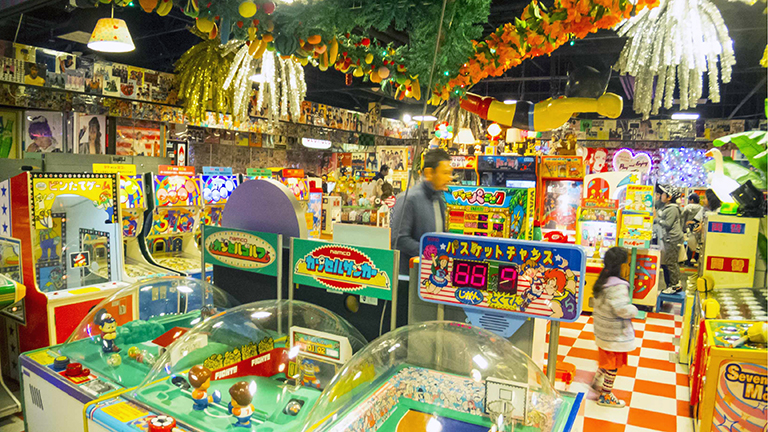
To reach Odaiba if you are on the green/white Yamanote Line (also spelled 'JR LINE') go to 'Hamamatsucho' station. From there get the monorail (where it will pass below the Rainbow bridge, which is really quite astonishing believe me) and then reach the 'Tonnuzu Isle' station.
As soon as you leave the train you'll know that you're in the right place as the city will look like the futuristic city from Neon Genesis Evangelion - Neo Tokyo is real!
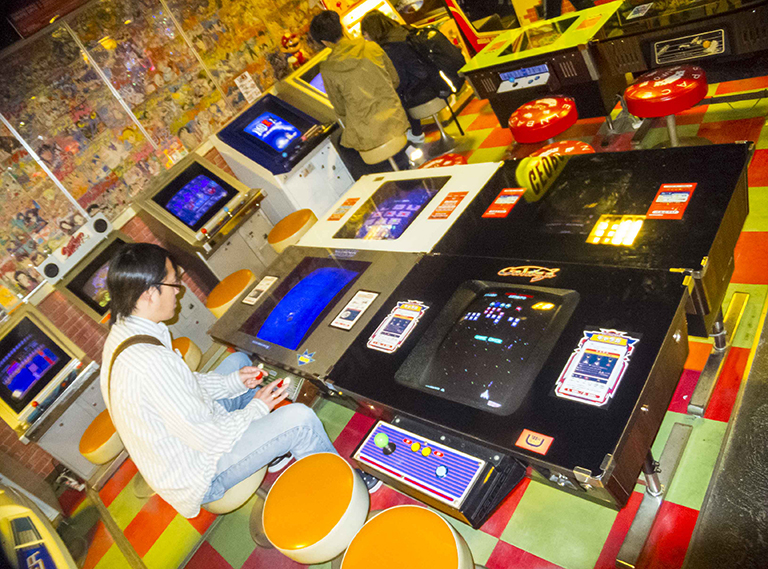
Instead, if you are closer (inside Tokyo) at the 'Shin Bashi' station (especially if your hotel is located the north east part of Tokyo, as for example: Akihabara, Tokyo Station, Ginza, etc..), then you must get the Yurikamome Line and reach the 'Rinkai Line' and reach the 'Odaiba Kaihin Koen' Station.
If you are not close any Yamanote JR's station, then from your train line reach the 'Shin Kiba' station, and from there take the 'Rinkai Line' (and always go down at the station 'Odaiba Kaihin Koen').
Sign up to the T3 newsletter for smarter living straight to your inbox
Get all the latest news, reviews, deals and buying guides on gorgeous tech, home and active products from the T3 experts
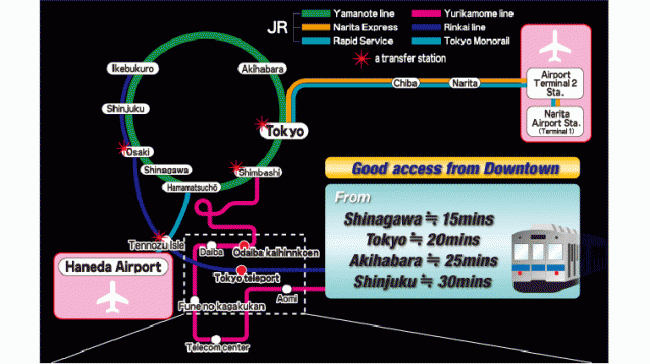
The Subway ticket from 'Shin kiba' to Odaiba should be around 360 yen (approx. 2,50 GBP - just to go). Yeah I know what you are thinking "Tokyo's trains are expensive!", well let me tell you a taxi ride right here is even more expensive and unless your middle name is Moneybags then you shouldn't attempt it.
Navigating the Decks building
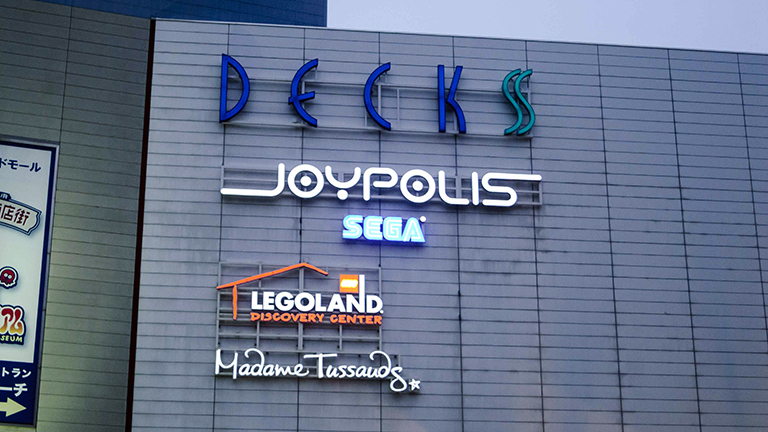
OK, so now we've cleared how to reach Odaiba station, the next thing we need to cover is getting to the centre. To find PlayLand you'll need to look for the 'Decks' building (recognisable by the Sega's Joypolis sign on the top of the wall).
As soon as you are inside the Decks building you'll have to go down the central corridor lined with many restaurants, shops and - of course - people! (it is always popular and crowded here).
At the end of the hallway you will see the magnificent entrance to Sega's popular arcade centre with its gigantic LED display (see the photo) telling you that you reached the right place. At this point, get the escalator and go to the first floor and you will be in front of PlayLand. Woo!
Instead, if you have taken the root from opposite side of the building (from the bridge near the futuristic Fuji TV's building to be exact), you'll find the Joypolis immediately at the entrance on your left, so just get the escalator and there you are.
The PlayLand
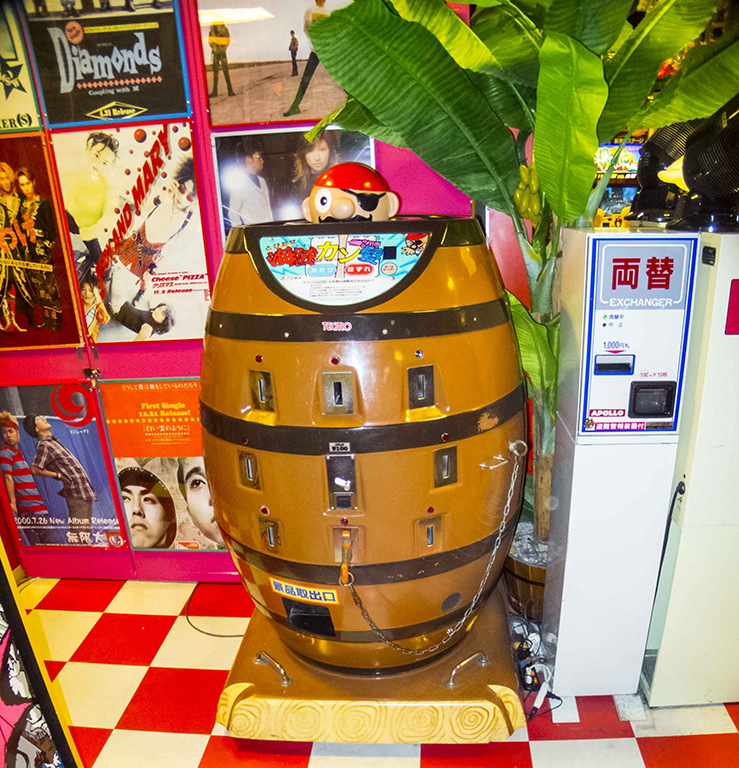
Entering at the 'PlayLand' is like no other place on Earth. It is clearly a mid-way point between a retro museum and an amusement center, not only beceause there are vintage arcade machines dating back 40-50 years old, but also posters and records all over the place to recreate the feeling of those eras.
Indeed, as soon as you enter Playland it seems focused on the '50s and '60s with the best entertaiment games of the time (obviously unknown to us), reaching the 70's and - finally - the mighty 80s at the bottom of the venue.
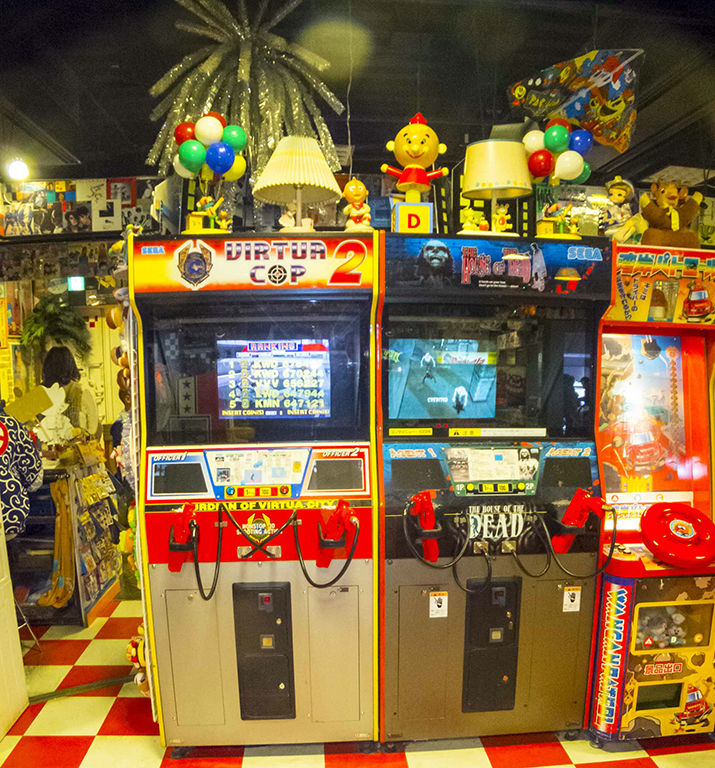
Looking around it is pretty clear that the management placed the games with no casual order, because studying each machine it seems like their order has been decided upon with extreme care to show the evolution of amusement centers, placing games according to the time history: so logically that is why the more recent systems are at the bottom of the venue.
Logically, for space reasons, in this arcade center there is no 'Lord of Vermillion' or the 'WCCF' that you would find anywhere else, but 'only' retro arcade games until the mid 90s in their original dedicated cabinets.
Rare cabs are everywhere
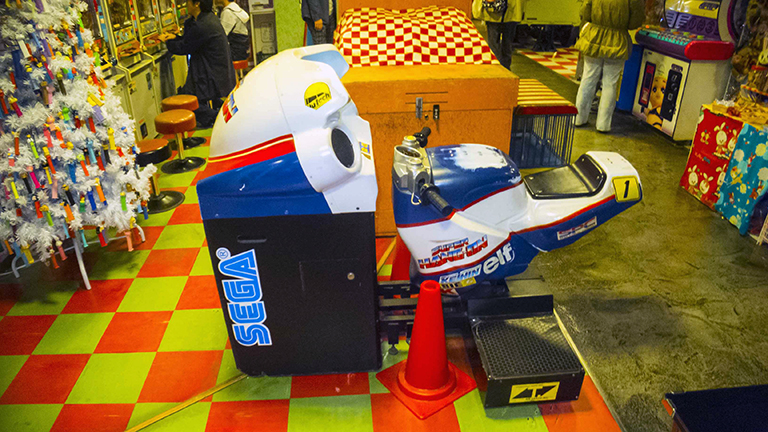
One of the first cabs you can find is the mighty rare deluxe version of 'Super Hang-On', one of the most beautiful and unsurpassed motorcycle games ever made.
As you can see by the photos Yu Suzuki's masterpiece is still in good condition. Clearly being made in 1987 the usage on the arcade cabinet is pretty visible due to its 30 year career, but considering the general work life of a new machine (5 years) the fact that the system is 100% and not broken is a miracle in 2017!
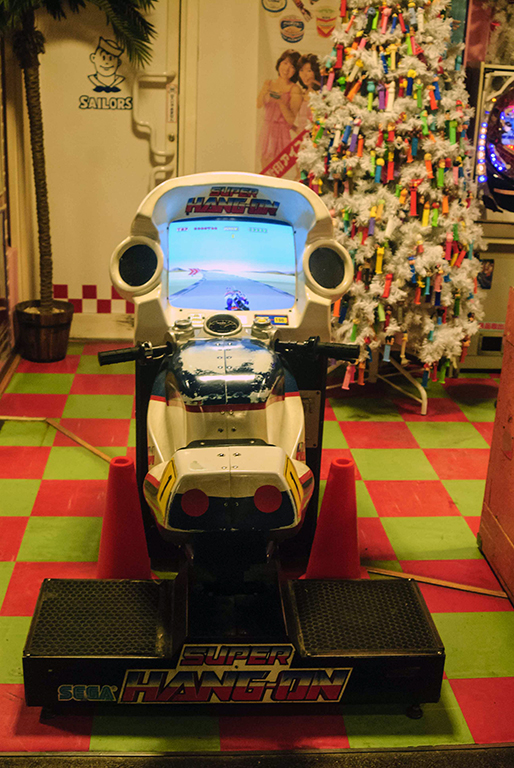
Taking a ride on this deluxe version still works very well, and the game still rocks and sincerely makes the latest ones look poor in comparison. I am not saying this as a biased nostalgic gamer, but in 30 years it is not a mystery that even today the cockpit of the game is copied by most of the arcade companies to present "new" motorcycle games. As one of my university teachers used to say about copyright law: "they can copy the idea but it will never be the same". And that's true!
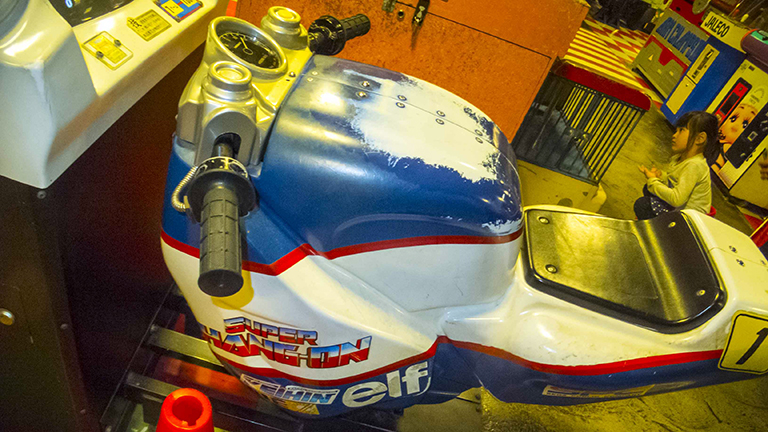
In Super Hang-On the sense of speed, thrills and adrenaline with the turbo activated with the real motorcycle prop is really impressive, especially when we are talking about a 16-bit game in 2017. Pac-Man, Tetris, Out Run and Dragon's Lair still today are evergreen because each time you play you get the sense it is always a new game experience, one that is different from the previous one. 'Super Hang-On' with this cab is absolutely one with them.
Candy land
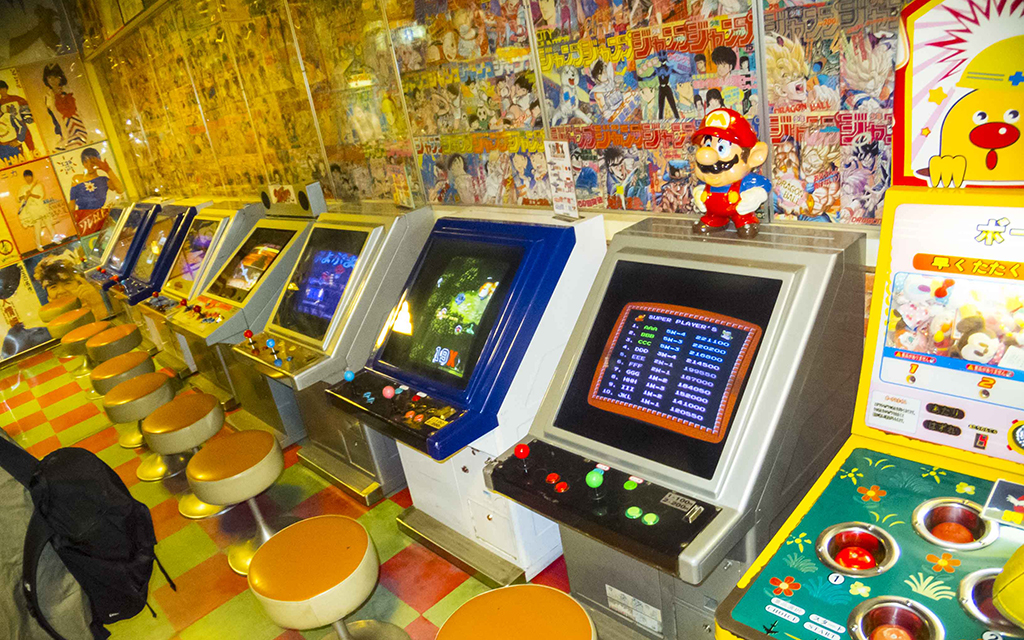
Looking around for other games, there are six rare original cocktails: and between them there are Namco's 'Galaga', Taito's 'Space invaders Part I' and.. 'Othello' (never seen that before!)
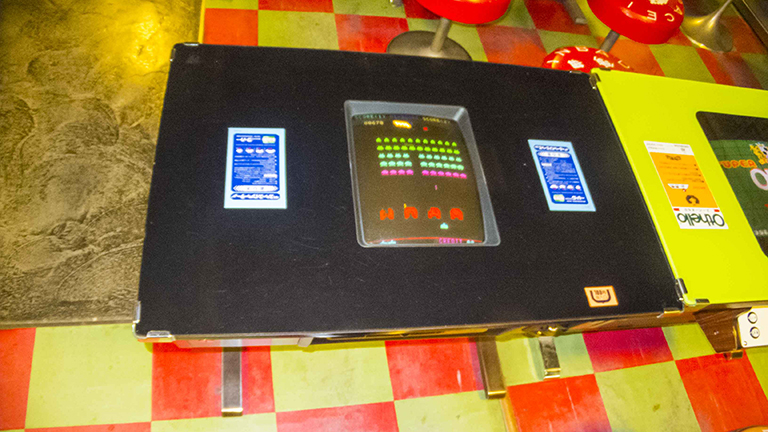
Near them there are lots of the first Japanese arcade cabs widely known as 'Candy'.
A 'Candy' is basically a one-metre tall arcade cab that compared to our western arcade machines must be played seated instead of upright. This is due to the general taste of the Japanese players, which prefer to play seated instead of like westerners upright.
The monitors of these machines don't use normal 20-inch monitors as have become standard since the 1980s, but instead use 26" or 32" inch CRT screens.
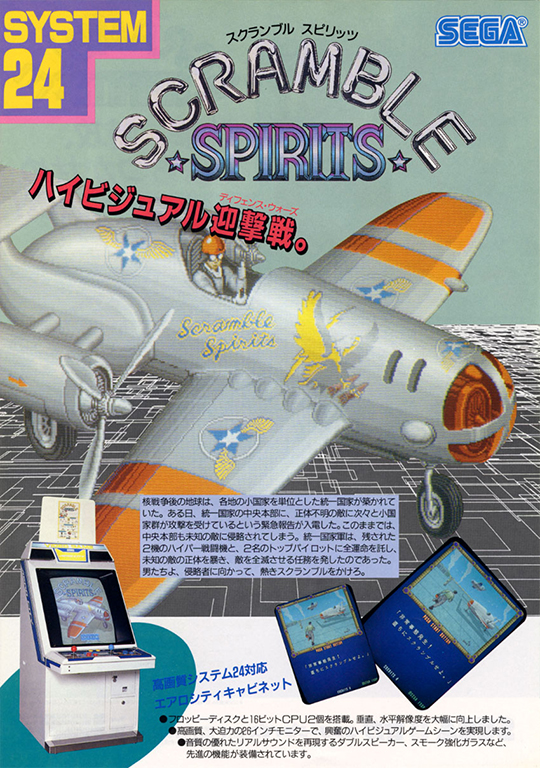
Some of them clearly here made history. Standing in front of the Street Fighter II candy version with dedicated control panel is awesome and really has to be considered a little jewel. There is also a rare candy version of 'Spartan X' (the Japanese version of 'Kung-Fu Master') and, last but not least, Super Mario Bros!
Talking about their placement with the management, these candy cabs are displayed in line clearly with the main reason that these games are here to testify first of all and show the younger generations the various differences between each other (this is the reason I used the word museum earlier in this article) having made history here in Japan.

Densetsu
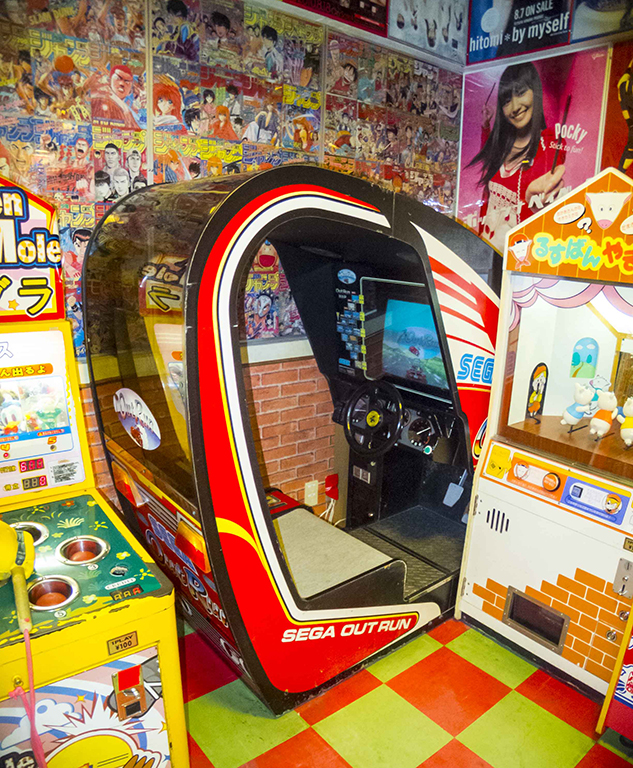
Behind all of these amazing candy cabs however is a real revelation: Out Run!
If you are a millennial and are like, "what's an Out Run?" then let me educate you on this legendary game and what it represents today.
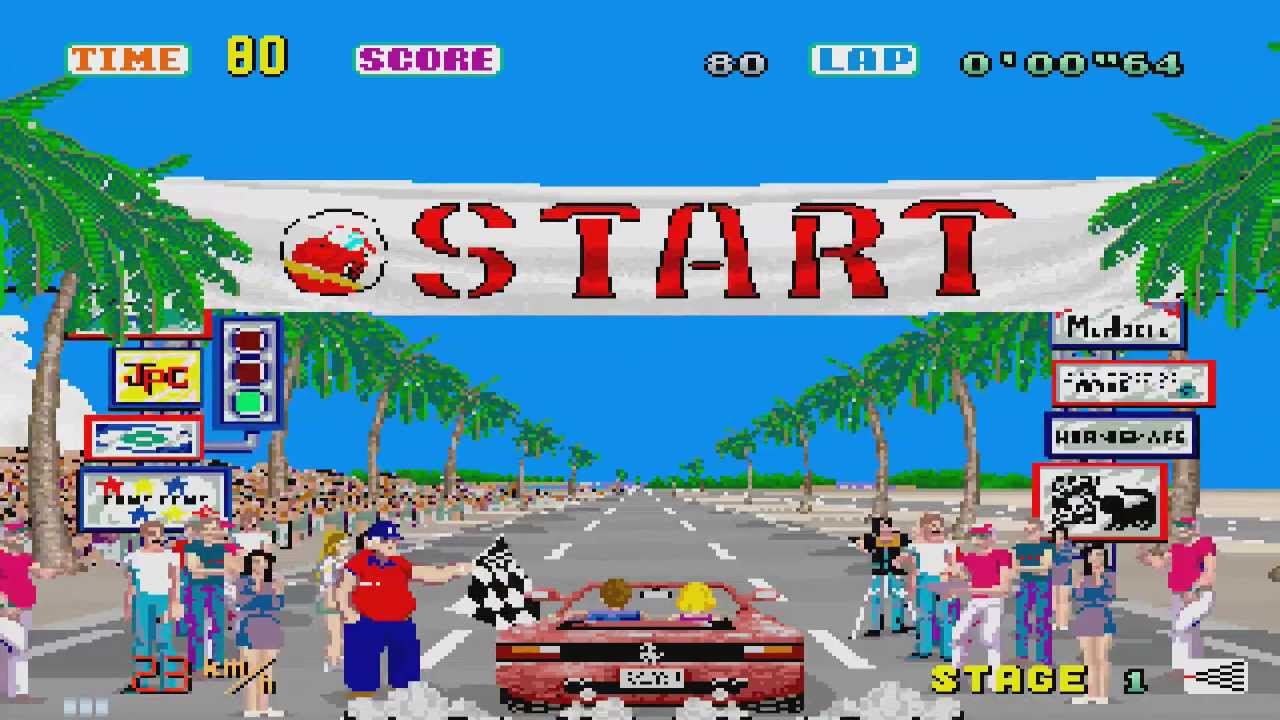
Well, Out Run is not just considered today one of the biggest and most important Japanese arcade racing game ever, but also made itself an icon of the so called 'Tai kan' games (moving cabinets) that were pioneered in the 80s by legendary AM2 leader Yu Suzuki. Once introduced, these Tai kan machines forever changed the idea of simulation in the arcades.

In few words Suzuki was an innovator like no other, and was the same creator of 'Super Hang-On' and - one for Dreamcast fans - Shenmue.
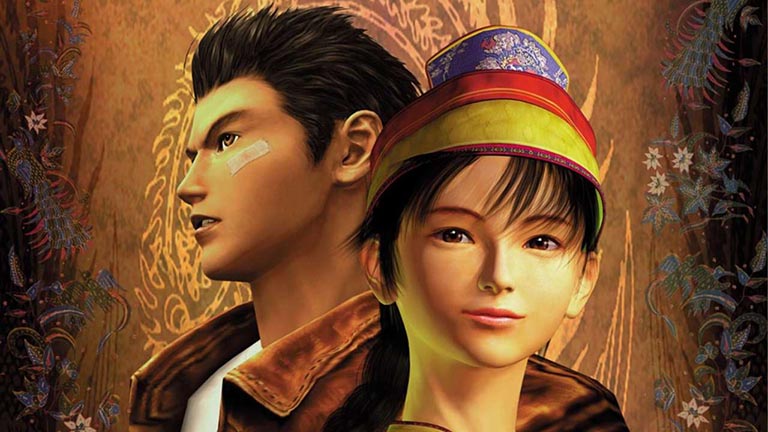
Talking about the arcade history of 'Out Run', this legendary arcade game was produced by Sega in 1986 in 4 versions internationally: the mini version (with 20" inch monitor but no force feedback), the upright model (with force feedback), the standard version (25" monitor) and the mighty deluxe moving version (with 29" nanao monitor, the same as the Aero City' CRTs).
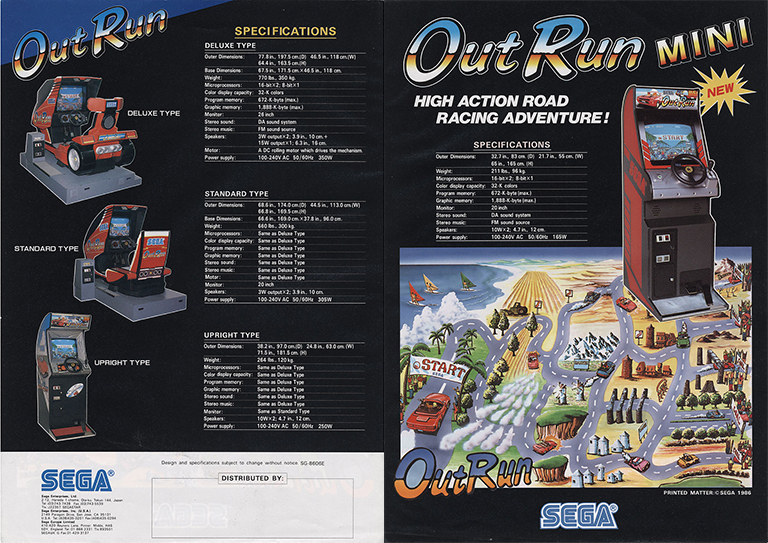
But in addition to all these versions, for the first time in more than 31 years we now know that Sega produced one more version too - probably just and only for the Japanese Market - that I didn't even know about (and I am a MASSIVE Out Run fan). Behold its majesty with your own eyes!
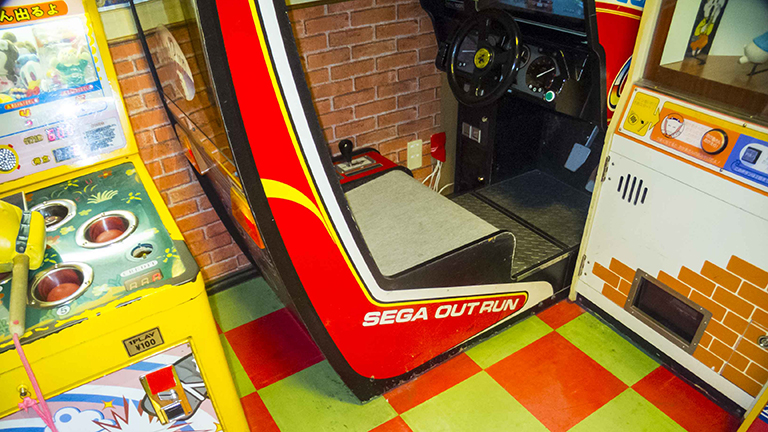
Preserved (in this case the term is more than appropriate) and saved here by the PlayLand, this version is a sit down non-moving cockpit - à la 'Pole Position' - with a fibreglass surround covering the head (differently from the moving versions where the upper part is open).
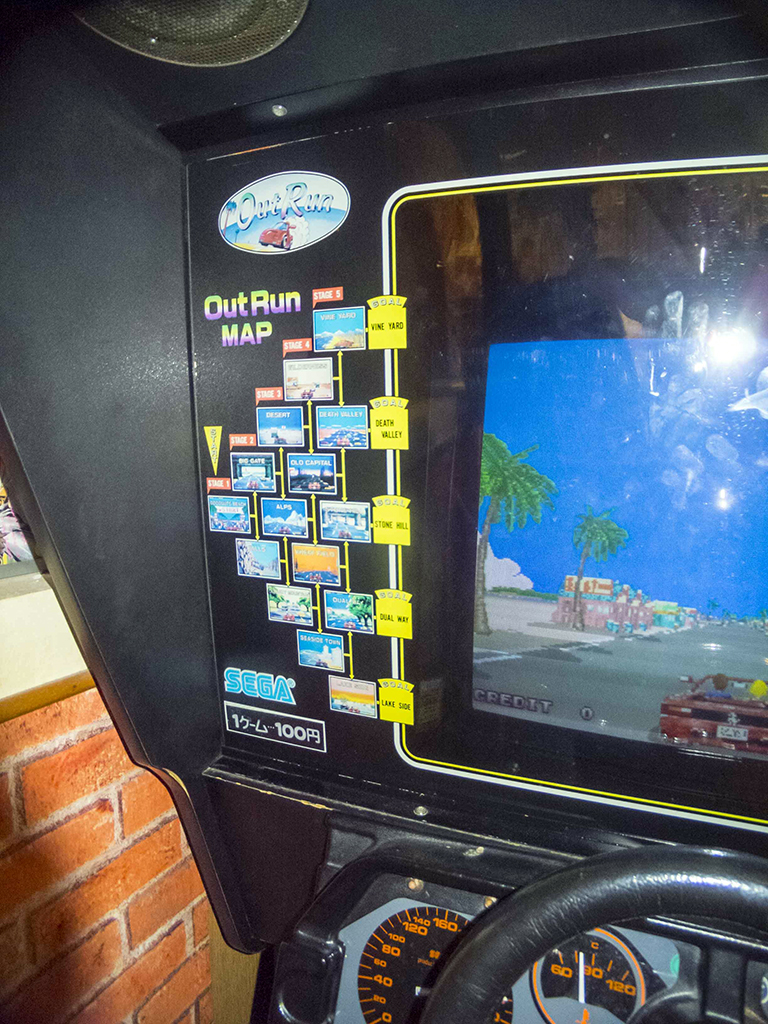
Artistically, the design and the conditions of this cabinet make it simply a piece of art, and what's more, it is almost in perfect condition (apart the accelerator pedal for the logical daily usage. No sun fade on the sides or cigarete burns, broken gears or steering wheel, missing parts, etc.. nothing: all perfect!
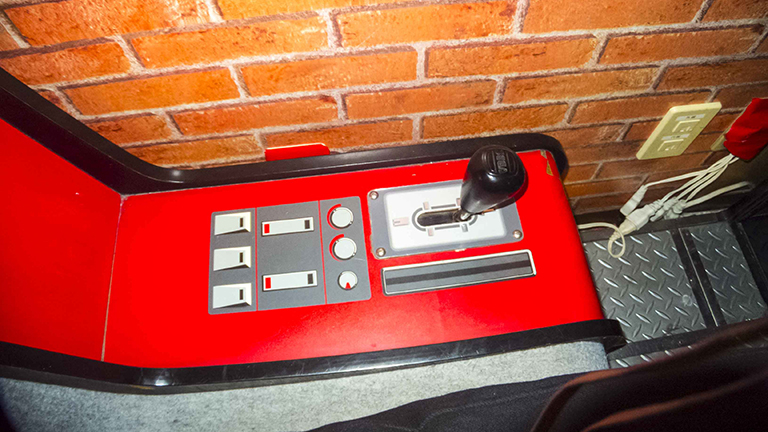
From this photo is also possible see the Sega's Seal of originality, and by the serial number (11,967 see the photo). It is one of the first produced because generally the ones arrived here in the west are around 20,000-30,000! My own machine, for example, is number 25,698.
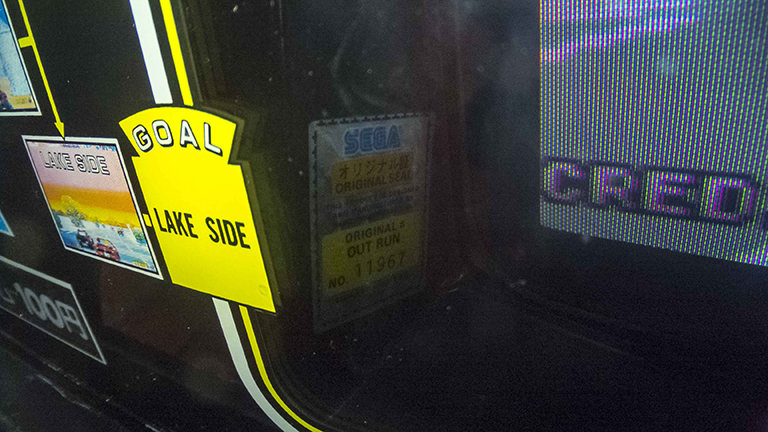
The graphics all around the cabinet are simply amazing and I've never seen before such detail on every single part of the cabinet. Just see the design of the Ferrari on the back glass or on the bezel to see how impressive it is - plus no blank space or detail has been left out.

Just looking at the bezel I have never seen a fumè glass so detailed (even on any other of Out Run's variants). The map course for example is usually printed on the top of the moving cabinets in a separate piece of plastic, or on the upright version directly on the bezel, however here it was directly impressed on the glass. And what makes this cabinet even more rare and strange is the course map...
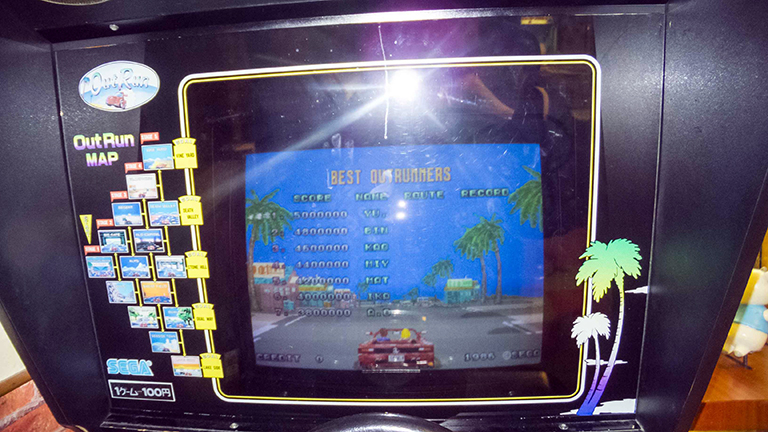
While many do not know that Out Run was originally designed and concepted differently from what came to our market, during the transition between the first Japanese version (know as Koku-nai, which means 'domestic') and the second more famous version (known as Gaiden, which means 'overseas'), many modifications were made to the stages' structure and their place on map (just check the first stage to see the difference in the curves).
This was probably done to improve the game's profitability in front of the market (i.e. the operators who were the first investors of the company). The same thing for example was done even with After Burner, which when it arrived in the west was renamed 'After Burner II' (check the title screen).

To have more knowledge of what I am talking about, just take a look at the map of the first version and the second version (the one we used to play). Here in this side-by-side map image and then two gameplay videos you can see every single detail and the differences:
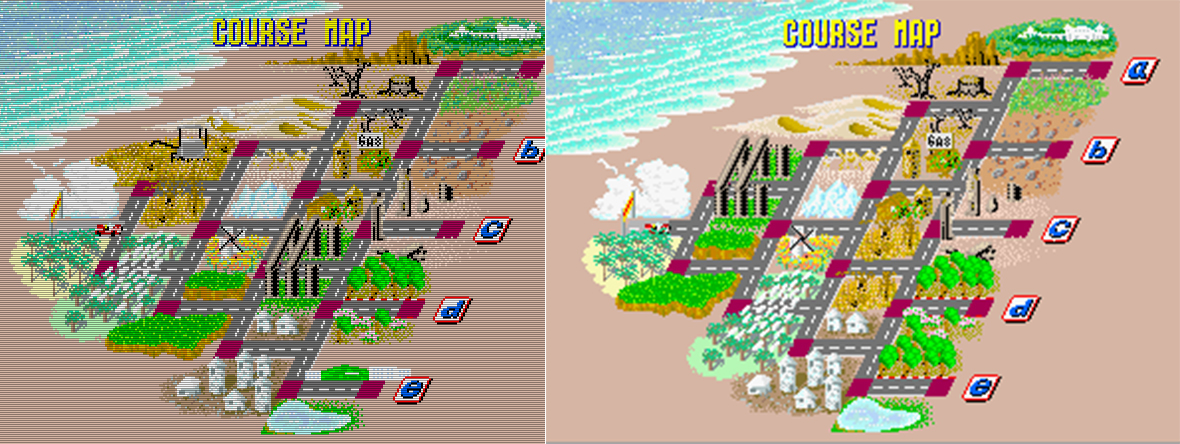
Koku-nai version (literally 'domestic')
Gai-den version (literally 'overseas')
That being said, this sitdown version being Japanese, instead of displaying the Koku-nai's map course, displays the Gai-den version instead!
So the idea that this sit down cabinet was probably a prototype concepted and produced for the western market (but then dropped for unknown reason) make it - especially today - really one of a kind. A very, very special arcade machine.
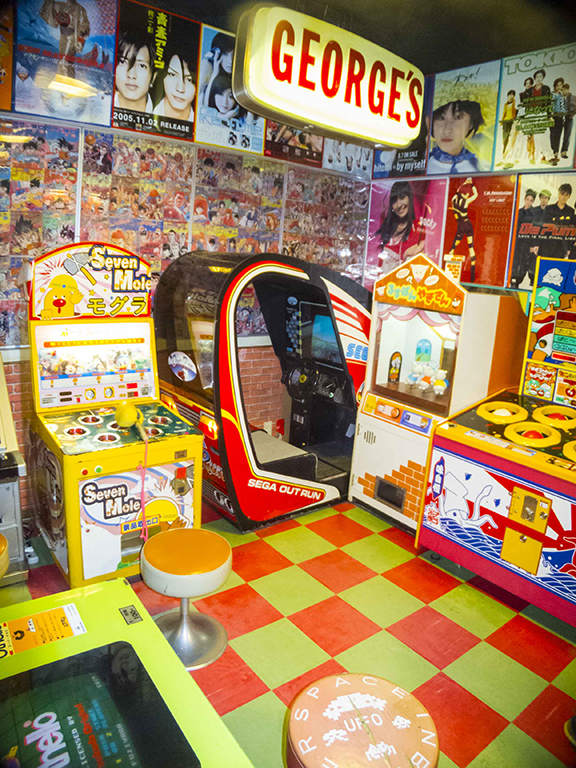
In my long career covering Japanese arcade technology, I have never come across or heard anything else about this system and, even for me, due to its lack of information (no brochure or official information has ever been released about it), and its contradictory elements (such as the map course) it has been difficult to classify it.
One thing is for sure though, it is reason enough alone to go and visit PlayLand, which really is a treat for arcade fans and a genuinely unique experience. Here is a short video tour:
Of course, inside the 'Decks' centre there are also many other attractions such as a haunted house, weird shops and, last but not least, Joypolis! For those who missed our guide to Joypolis then check it out now.
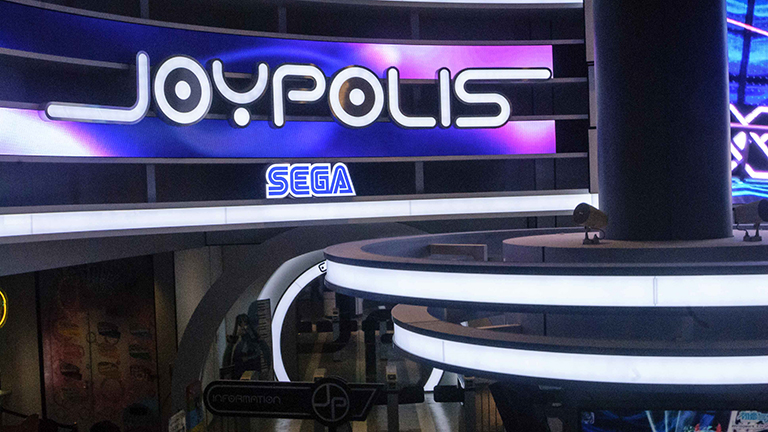
Anyway, I hope this guide to Odaiba's PlayLand proves useful to you. For this week that is all from Made in Japan, see you next week from another amazing place in the Land of the Rising Sun.
Marco Zangirolami has been reporting on the video game industry since 1996. During his career he has been a correspondent from Japan for the most important Italian firms, head of the 'Made in Japan' section on 'ConsoleMania' (the most important Italian video game magazine of all time) and 'Automat', the leading magazine of the Italian Jamma's Arcade Association. He is a contributor to T3.com, writing about the video game industry. In his spare time Marco likes to collect and restore classic arcade machines from the 1980s and 1990s.
